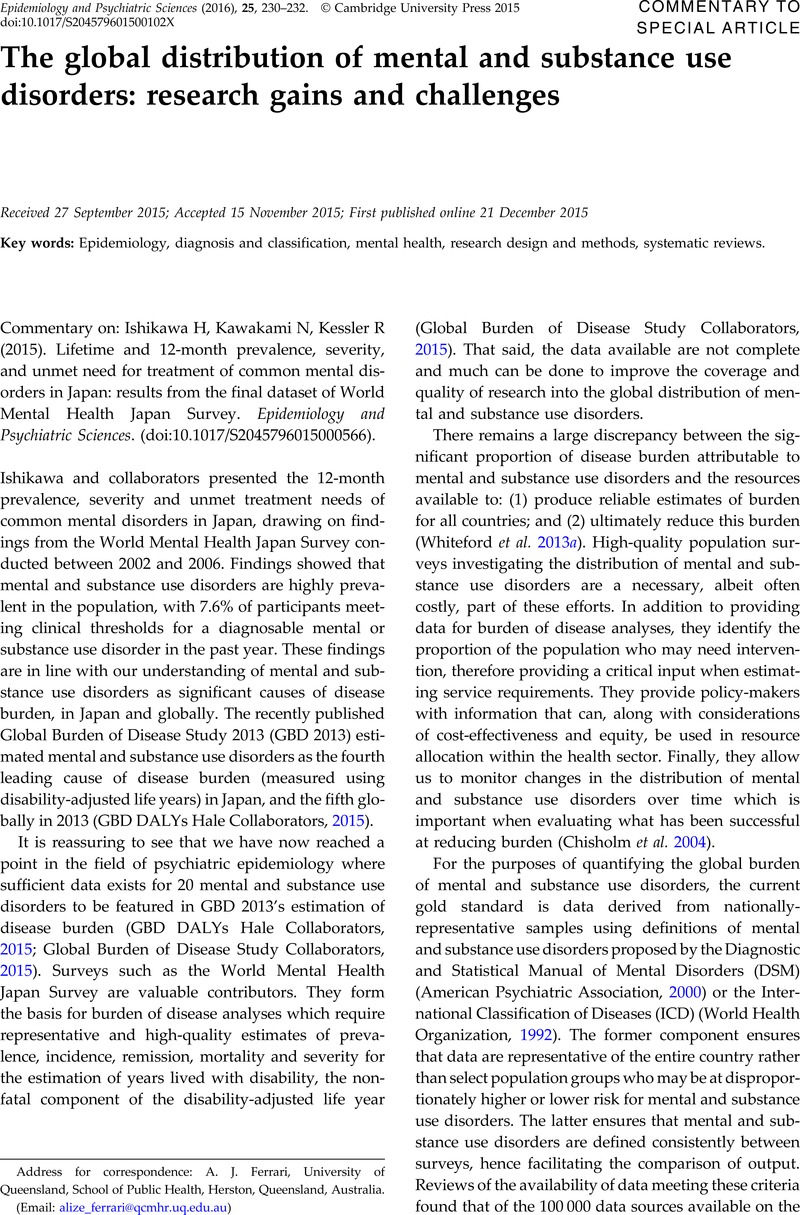Affiliation: University of Queensland, School of Public Health, Herston, Queensland, Australia
Queensland Centre for Mental Health Research, Wacol, Queensland, Australia
University of Washington, Institute for Health Metrics and Evaluation, Seattle, USA
